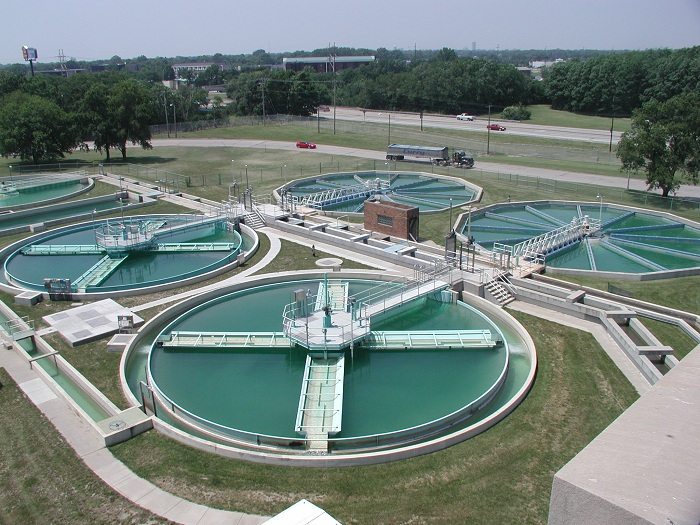Water treatment entails making water more acceptable for a specific end-use. The end-use may be drinking, irrigation, water recreation, river flow maintenance as well as being safely returned to the environment. The process removes contaminants or reduces their concentration so that the water is made fit for the desired end-use. Treatment for drinking water involves the removal of contaminants from raw water so as to produce water that pure and clean for human use without any short term or long term health risk
Among the substances removed during water treatment include suspended solid objects, bacteria, algae, virus, fungi and minerals. According to the World Health Organization fact sheet, contaminated water causes over half a million diarrhea deaths every year and 38% of health facilities in low and middle-income countries lack any water source.
Demineralizing
Reverse osmosis involves demineralizing or deionizing water by subjecting it to pressure through a semi-permeable Reverse Osmosis Membrane. The process uses a high pressure pump to increase the pressure on the salt side of the Reverse Osmosis and force water through the semi-permeable Reverse Osmosis. The level of pressure applied mainly depends on the level of salt concentration of the water. The higher the salt concentration in the water, the higher the pressure that will be required to overcome the osmotic pressure.
As the water pass through the Reverse Osmosis membrane under pressure, the water molecules pass through the semi-permeable membrane while the salts and other contaminants are held back and discharged via the reject stream, which is then led to a drain or can be fed back into the feed water supply in some cases to be recycled through the RO system to save water. The water that finally makes it through the Reverse Osmosis membrane is called permeate or product water and usually has around 95% to 99% of the dissolved salts removed from it.
It is important to note that the Reverse Osmosis system uses cross filtration instead of the standard filtration where the contaminants are collected within the filter media. With cross filtration, the solution passes through the filter, or crosses the filter, with two outlets: the filtered water goes one way and the contaminated water goes another way. To prevent accumulation of contaminants, cross flow filtration allows water to wash away contaminant build up and also allow enough turbulence to keep the membrane surface clean.
Deionization
This is the process used for get rid of all dissolved salts from the water. Deionization involves water flowing through two ion exchange materials in so as to effect the removal of all salt content.
The terms deionization and demineralization are used somewhat interchangeably by the industry. While the term demineralization is generally better understood, deionization is especially apt.
The passage of water through the first exchange material removes the calcium and magnesium ions just as in the normal softening process. Unlike home equipment, deionization units also remove all other positive metallic ions in the process and replace them with hydrogen ions instead of sodium ions. As the metallic ions in the water affix themselves to the exchange material, the latter releases its hydrogen ions on a chemically equivalent basis. A sodium ion (Na+) displaces one hydrogen ion (H+) from the exchanger; a calcium ion (Ca++) displaces two hydrogen ions; a ferric ion (Fe+++) displaces three hydrogen ions, etc. (Recall that home softeners also release two sodium ions for every calcium or magnesium ion they attract.)
Ultra-Violet water treatment
In this process, water is disinfected as it runs through a stainless steel chamber that contains a UV lamp. As water flows past the lamp, illness-causing microorganisms receive a lethal dose of UV light that attacks their DNA and eliminates their ability to reproduce. Harmful bacteria and viruses are deactivated.
UV water disinfection is a safe, chemical-free way to treat water. Even chlorine-resistant microorganisms are made harmless through UV exposure. Lack of chemicals means no harmful chemical byproducts are going back into the environment, and the taste of the water is not affected in any way. Ultra filtration is used in many ways in Purified Water Systems. It is frequently used in downstream of ion exchange processes for organic, microbial and Endotoxin reduction. Ultra-filtration is often used in still feed water systems, in combination with ion exchange, to limit the Endotoxin and colloidal silica feed levels to the still
Chlorine dioxide
Chlorine dioxide is a broad spectrum biocide that is effective against all bacteria, viruses, mould, fungi, algae and spore formers such as Giardia and Cryptosporidium. Chlorine dioxide works by first destroying the cell membrane, then the nucleus of the bacteria by chemical oxidation. Because the organism is completely destroyed no resistant strains can develop which enables chlorine dioxide to be used on a continuous basis without the need for alternating biocides.
To achieve the most effective disinfectant or microbiological control program, the concept of effective kill (CV values) can be measured and controlled with our approach, using ORP as the indicator. Few, if any water treatment companies are using this as part of their control strategies. Chlorine dioxide is one of the most effective oxidizing biocides and Nanotech has the skill and technology to apply this effectively to any process.
New technologies
Lakeside Water Treatment from the US has recently launched a new Heavy-duty Multi-Rake Bar Screen that in removing harmful inorganic solids, successfully protects downstream equipment. It provides fast and efficient screenings removal for municipal and industrial wastewater treatment plants, pump stations surface water intake structures and combined sewer systems. It is built for ultimate reliability, durability and long life. This low maintenance, corrosion-resistant all stainless-steel screen, utilizes its multiple rakes to clean the screen and its replaceable rake teeth to penetrate the bar openings to positively remove captured solids.
The key benefit of this proven high-hydraulic capacity screen technology is the rapid debris removal of captured material by the continuous self-cleaning of the multiple rakes – especially for applications with high screenings loads.
According to Kevin Sofen of Darley Sunspring,Off grid water systems technology produce high volume of water which enables capacity building for communities to grow out of poverty through the sale of safe water.
Kevin further added that the Social enterprise water solutions as an emerging trend in the industry will see production of water for a cheaper price than bottled water and sell it to local communities.
The Darley Sunspring® is a self-contained, certified,solar and wind-powered,microbiological water purification system.
Competence of service provider
Competence and experience are key aspect in selecting water and waste treatment service providers. According to Mike Jefferies of Avista Technologies, people are now treating more effluents, which have a higher scaling tendency and a higher rate of fouling. They are treating water that they would previously have disposed of as effluent. Also the need to get as much out of the available water as possible is becoming a key driver in the industry.
However, Hayley Thompson, the Communication and Marketing Manager at Biwater says that, due to high competition among the service providers, it is hard to identify companies that can deliver on project requirements on time and within the budgetary allocations. He advises that governments and clients should ensure that the quality of the workmanship across the facilities is of the correct standard, whilst avoiding the potential pitfalls of employing lower quality products and equipment, usually sold alongside cheap finance, which at first, can seem attractive.
Biwater designs, constructs, operates and maintains large-scale water infrastructure, which increases water supply and storage provisions and improves sanitation for communities worldwide. In addition to large-scale works, Biwater have delivered a number of package plant projects, pipelines works and product supply contracts.
Service and Maintenance
Service and maintenance back up are very important aspects that should never be ignored according to Charles Mousley from Biobox Kenya. He says Sustainability means regular preventative and proactive maintenance. He advises clients to Use a specialized supplier, it is a specialist industry requiring focused and specialist knowledge and support. “Regardless of product and technology, the supplier must have a full local presence.
This means full technical in-house capability with adequate staff, facilities, & resources. Take the time to visit their operation, visit their installed sites, get a project portfolio and customer references”, he says. Biobox Kenya specializes in wastewater treatment solutions targeting mostly off-grid domestic/municipal sewerage treatment, but also taking on industrial & process wastewater customers.
Off grid water systems produce high volume of water which enables capacity building for communities to grow out of poverty through the sale of safe water.
social enterprise water solutions as an emerging trend in the industry will see production of water for a cheaper price than bottled water and sell it to local communities.





